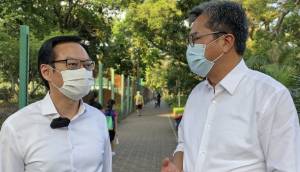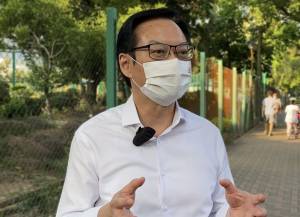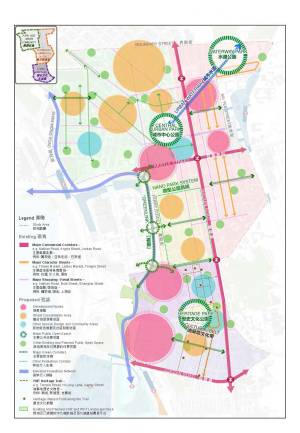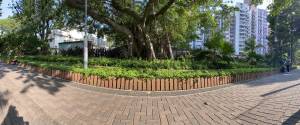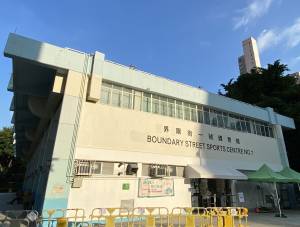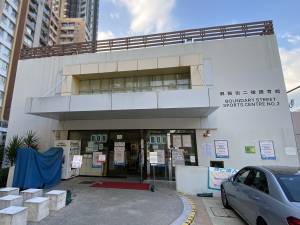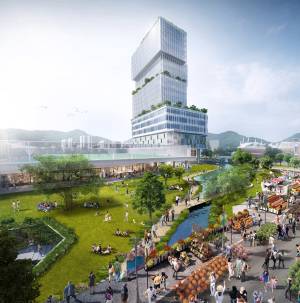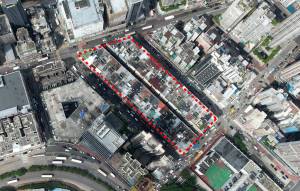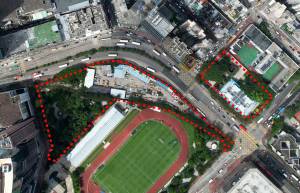Proactively pursuing urban renewal with the Urban Renewal Authority
|
In her latest Policy Address, the Chief Executive stated that more effective policy measures should be adopted to expedite the pace of redevelopment and renewal in view of the rapid ageing of buildings. As one of the measures, the Urban Renewal Authority (URA) has recently completed the District Study for Yau Ma Tei and Mong Kok (Yau Mong District Study), which maps out a blueprint for restructuring and replanning the two old districts, identifies development nodes (DNs) and proposes an array of new planning tools with a view to enhancing land use efficiency and redevelopment potential. The Policy Address has also put forward similar district planning studies for another two old districts, namely Tsuen Wan and Sham Shui Po. Earlier on, I invited the Managing Director of the URA, Ir WAI Chi-sing, to visit Mong Kok and talk about urban renewal. Yau Mong District Study The Yau Mong District Study, which commenced in 2017, covers the two districts with an area of about 212 hectares. The study has formulated the Master Urban Renewal Concept Plans (MRCPs) which suggest that the two districts be divided into five Urban Renewal Opportunity Areas with different planning themes. For example, it is proposed that Mong Kok East (MKE) and Mong Kok West be developed into an “exuberant commercial district”, and Tai Kok Tsui and Yau Ma Tei be transformed into a “park-side green community” and “living heritage” respectively. The study also proposes five DNs which are planned as anchor developments in the districts with respective distinctive features and they can be the catalyst for regeneration of the surrounding areas. Previously, Ir WAI Chi-sing and I visited the area where one of the DNs – Nullah Road Urban Waterway in MKE – will be developed. Development nodes, the catalyst for district renewal As introduced by Ir WAI Chi-sing, the plan would be to reopen the existing covered nullah at Flower Street Path and convert it into a waterway. The land parcels along the waterway now occupied by Boundary Street Sports Centres No. 1 and No. 2 as well as Boundary Street Sports Ground will be enlivened with a large Waterway Park. Also, a car park with some 300 parking spaces will be provided underneath the Waterway Park to address the shortage of parking spaces in the district. Atop the car park, a new sports ground will be built, and right beside it will sit a new Government complex which would be designed for reprovisioning the existing sport facilities and providing additional community facilities. The waterway will be extended across Prince Edward Road West to Nathan Road with commercial (high-rise development and low-rise boutique-lined street) and residential developments on both sides. I am sure you will look forward to seeing a refreshing look in the Flower Market and its surrounding area with the Waterway Park, which will offer a recreation and leisure space amid the hustle and bustle of Mong Kok. New planning tools with greater benefits The MRCPs recommended by the Yau Mong District Study will be adopted as the planning vision. Ir WAI Chi-sing says that the study has also proposed a number of new planning tools such as transfer of plot ratio, street consolidation areas and interchangeability of domestic and non-domestic plot ratio which will make urban renewal more efficient and cost-effective. The Government supports the implementation of the new planning tools to expedite urban renewal by enhancing commercial viability and inducing private sector participation in redevelopment. Such tools will also be applicable to privately-led redevelopment projects and, where appropriate, be adopted in redeveloping other old districts. Actively pressing ahead with implementation details The URA will shortly engage various professional bodies and relevant stakeholders and seek their views on the proposals put forward in the Yau Mong District Study. Meanwhile, the Development Bureau and relevant departments are working closely with the URA to formulate the implementation details of the proposed planning tools, e.g. updating some guidelines for implementation of measures, which is expected to be completed next year. Ir WAI Chi-sing says that the URA will incorporate suitable projects in its coming 5-year Corporate Plan and take the lead in piloting the new planning tools so as to set a reference for applying the tools in privately-led redevelopment projects. Commencing district studies for Tsuen Wan and Sham Shui Po Making reference to the experience gained from the Yau Mong District Study, this year’s Policy Address invited the URA to commence similar district planning studies on the old districts of Tsuen Wan and Sham Shui Po with a view to formulating the renewal plans. For the old districts of Sham Shui Po and Tsuen Wan, the URA may examine their conditions in terms of land use, road planning, open space, community facilities, etc. by applying the concepts and planning tools proposed in the Yau Mong District Study, so as to map out respective blueprints for planning and restructuring. The URA may also explore the feasibility of adjusting and increasing the development intensity of the districts, thereby optimising land use and speeding up redevelopment of old urban districts. Conducting an in-depth and extensive restructuring study for Sham Shui Po Sham Shui Po is a traditional old district situated to the north of Yau Ma Tei and Mong Kok. Ir WAI Chi-sing says that the 17 projects previously launched by the URA in Sham Shui Po were mainly implemented under a project-led approach without much restructuring and planning, and the room for development was limited. At the end of last month, the URA launched the Kim Shin Lane/Fuk Wa Street Development Project and the Cheung Wah Street/Cheung Sha Wan Road Development Scheme in which the old building clusters, obsolete community facilities and the adjoining government land are covered in the planning area for integrated planning and mixed use development under the concept of “single site, multiple use” advocated by the Government, thereby unleashing the land development potential. He opines that it is appropriate to conduct an in-depth and extensive restructuring study for Sham Shui Po similar to Yau Mong District Study so as to formulate a holistic renewal blueprint and speed up the pace of renewal. Examining the plot ratio for Tsuen Wan Separately, Tsuen Wan is one of the first-generation new towns in Hong Kong and has been developed since 1970s with a large number of buildings aged over 50 years. Ir WAI Chi-sing says that the domestic plot ratio stipulated for new towns back then was generally lower when compared with that for the urban areas, with the maximum domestic plot ratio set at 5 for Tsuen Wan. Therefore, it is opportune to commence a similar study for Tsuen Wan to examine the feasibility of increasing its plot ratio and review the land uses so as to improve the overall environment of this old district. Urban renewal is a challenging task. Ir WAI Chi-sing says that renewal of old districts should be considered from a macro-planning perspective, rather than focused on a project or a small district. Regarding the commencement of district studies for Tsuen Wan and Sham Shui Po, the URA’s management team will seek approval from the URA Board as soon as possible. Subject to its endorsement, the two district planning studies would commence in due course and are expected to be completed in two years’time. |
17 October, 2021
Back